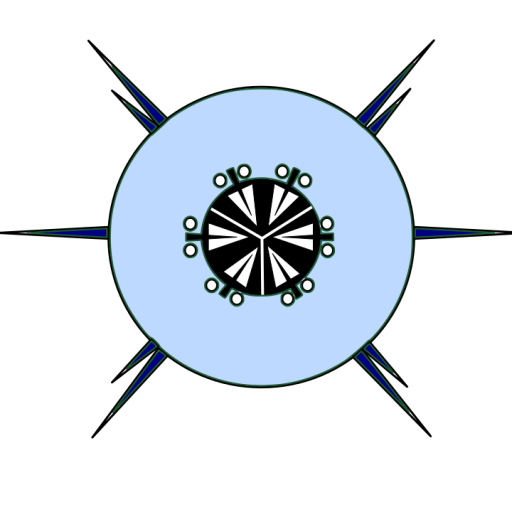Introduction.
One of the problems of fixing samples with formalin is that the subsequent extraction of DNA for genetic analyses is much more difficult. Given the importance of genetic analyses in modern studies of biodiversity it became increasingly important to find methodologies that preserve specimens in a condition adequate for morphological analyses but which also allowed for subsequent DNA extraction. DESS is a solution of 0.25M disodium EDTA at a pH of 8.0 and 20% DMSO (Dimethyl sulphoxide), saturated with salt (NaCl). DESS has been developed to meet the criteria outlined above (Yoder et al. 2006).
Preparation of DESS.
The following is based on the protocol sent to me by Melissa Yoder, along with my personal comments and observations.
Preparing the DESS can be time consuming, primarily due to the time it takes for theEDTA to dissolve. It is therefore best to prepare a large volume of EDTA at double molarity (0.5M EDTA) in advance.
Preparation of 2L of 0.5M EDTA:
Disodium EDTA (372.24g)
5M NaOH (500ml approx.)
Distilled water (2.5L approx.)
First make up the 5M solution of NaOH. Add 200g of pellets (slowly!) to 1L of distilled water. The molar mass of NaOH is 39.99g mol-1, so for a 5M solution 200g are needed. This is an exothermic reaction so it is best to do the mixing in a water-bath, and add the pellets to the water not the water to the pellets.
Next dissolve 372.24g of disodium EDTA in 500ml of distilled water. I do this in a large (2L) conical flask on a magnetic stirring plate. It is much easier to add the EDTA to the water than the other way round. Next add the 5M NaOH to the mix, slowly, to bring the pH up to 8.0. Obviously this is much easier if you have a pH meter that you can dangle in the solution, also make sure the pH meter is properly calibrated before you start. Add the 5M NaOH slowly as it is easy to over shoot. Add small amounts at a time and allow the reading on the meter to settle before adding more, as you get closer to a pH of 8.o add the 5M NaOH more cautiously. The disodium EDTA will start to dissolve around pH 7.0. Be patient it can take several hours for the disodium EDTA to dissolve. If you do not use disodium EDTA it will require more 5M NaOH to pH the solution. Once the disodium EDTA has dissolved bring the solution up to a final volume of 2L with distilled water.
Preparation of 2L of DESS:
0.5M disodium EDTA (1L)
Dimethyl sulphoxide (DMSO) (400ml)
Distilled water (600ml)
NaCl (300g approx.)
Mix the first three solutions together in a 2L conical flask on a magnetic stirring plate. Then add sufficient NaCl to saturate the solution. Add the 300g and wait for it to dissolve, then add a little more and wait for that to dissolve, repeat until no more salt will dissolve in the solution. Excess salt will accumulate in the bottom of the storage container, this is normal, just filter it out before you add the DESS to your samples.
Use of DESS in the field.
Adding DESS directly to a sample already full of seawater would probably dilute the solution making it less effective. (NB That is my assumption, I haven’t actually tested it to find out!). Removing the seawater from the sample, either by gravity or centrifugation, is either too time consuming or impractical in the field. In Antarctica we collected qualitative samples for fixation with DESS, these were taken to the laboratory at the field station or other suitable location and the meiofauna were extracted. First by decantation with 45µm filtered seawater and then by a second round of decantation after 15min of anaesthetisation in isotonic magnesium chloride (MgCl2). After extraction the meiofauna were fixed with an excess of DESS.
Working with DESS in the laboratory.
The only issue with working with DESS in the laboratory are the salt crystals. If you have a specimen that is covered or embedded in salt crystals simply transfer it to distilled water for a few hours, then transfer it back to a fresh solution of DESS.
Observations on DESS with different groups of meiofauna.
(23/07/2012) DESS has worked well so far with nematodes, we have been able to successfully use DESS fixed specimens as we had planned in the Antarctic project. Specimens were identifiable after fixation with DESS, compared to Formalin fixed specimens they we a little softer but perfectly usable. The specimens identified were subsequently submitted to genetic analysis in order to develop DNA Barcodes.
One group that does not appear to fix well in DESS is the Turbellaria. Specimens are turned into turbellarian shaped lumps of jelly. Oligochaeta were identifiable but not in good condition. I will report on other groups as and when they appear in DESS fixed samples.
References.
Yoder, M.; Tandingan De Ley, I.; King, I.; Mundo-Ocampo, M.; Mann, J.; Blaxter, M.; Poiras, L. & De Ley, P. (2006) DESS: a versatile solution for preserving morphology and extractable DNA of nematodes. Nematology 8:367-376.
